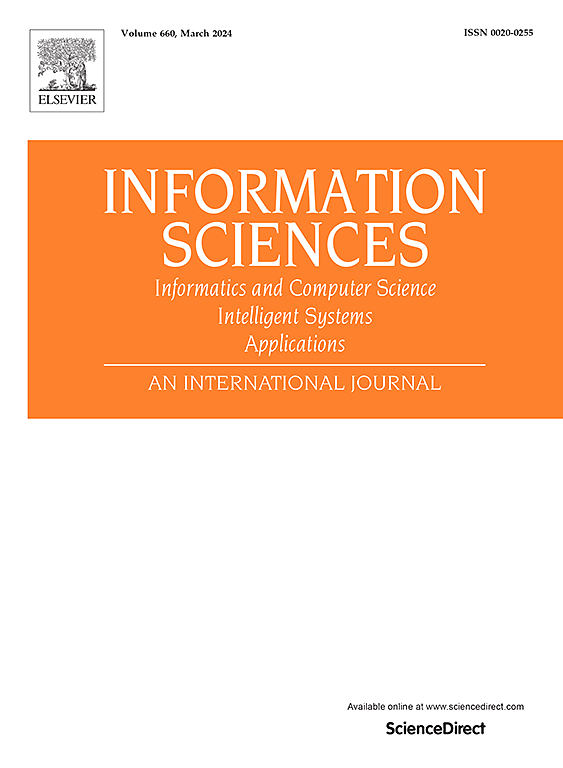多目标CNN优化:自动化模型设计的鲁棒框架
IF 6.8
1区 计算机科学
0 COMPUTER SCIENCE, INFORMATION SYSTEMS
引用次数: 0
摘要
卷积神经网络(cnn)在图像数据分类方面表现出了很高的性能。然而,cnn需要专家级的超参数调优,并且涉及大量的计算复杂性,这阻碍了其在实时和物联网系统中的有效部署。对cnn的研究表明,最优的超参数配置可以在提高分类精度的同时提高推理速度。我们开发了一种新的方法,使用多目标优化来自动设计CNN模型。我们的方法调整超参数来平衡分类精度和推理速度。我们将分类性能和推理速度定义为目标,并使用帕累托最优策略来平衡它们。与传统方法不同,moncn系统地探索了分类性能和计算效率之间的帕累托最优权衡,实现了无需人工干预的全自动架构搜索。在本研究中,我们选择NSGA-II作为我们的首选MOEA,同时确保框架保持足够的灵活性以适应其他进化策略。在基准数据集(CIFAR-10、CIFAR-100和FRUITS-360)上的实验评估表明,与人工调优的CNN架构相比,MoCNN平均减少了高达72.02%的推理时间,提高了6.72%的分类准确率。通过消除启发式超参数选择的需要,moncn增强了可扩展性,特别适合实时、移动AI和边缘计算应用。我们的研究结果表明,moncn在计算效率和预测性能方面都优于最先进的优化框架,突出了其在精度和速度至关重要的场景中的部署潜力。本文章由计算机程序翻译,如有差异,请以英文原文为准。
Multi-objective CNN optimization: A robust framework for automated model design
Convolutional neural networks (CNNs) have demonstrated high performance in classifying image data. However, CNNs require expert-level hyperparameter tuning and involve substantial computational complexity, which hinders their effective deployment in real-time and IoT systems. Research on CNNs indicates that optimal hyperparameter configurations can enhance inference speed while improving classification accuracy. We developed a novel approach that uses multi-objective optimization to design CNN models automatically. Our method tunes hyperparameters to balance classification accuracy and inference speed. We define classification performance and inference speed as objectives and balance them using a Pareto-optimal strategy. Unlike traditional approaches, MoCNN systematically explores Pareto-optimal trade-offs between classification performance and computational efficiency, enabling a fully automated architecture search without manual intervention. In this study, we select NSGA-II as our preferred MOEA while ensuring the framework remains flexible enough to accommodate other evolutionary strategies. Experimental evaluations on benchmark datasets (CIFAR-10, CIFAR-100, and FRUITS-360) demonstrate that MoCNN reduces inference time by up to 72.02% on average and improves classification accuracy by 6.72% compared to manually tuned CNN architectures. By eliminating the need for heuristic hyperparameter selection, MoCNN enhances scalability and is particularly well suited for real-time, mobile AI, and edge-computing applications. Our results show that MoCNN outperforms state-of-the-art optimization frameworks in both computational efficiency and predictive performance, highlighting its potential for deployment in scenarios where accuracy and speed are critical.
求助全文
通过发布文献求助,成功后即可免费获取论文全文。
去求助
来源期刊

Information Sciences
工程技术-计算机:信息系统
CiteScore
14.00
自引率
17.30%
发文量
1322
审稿时长
10.4 months
期刊介绍:
Informatics and Computer Science Intelligent Systems Applications is an esteemed international journal that focuses on publishing original and creative research findings in the field of information sciences. We also feature a limited number of timely tutorial and surveying contributions.
Our journal aims to cater to a diverse audience, including researchers, developers, managers, strategic planners, graduate students, and anyone interested in staying up-to-date with cutting-edge research in information science, knowledge engineering, and intelligent systems. While readers are expected to share a common interest in information science, they come from varying backgrounds such as engineering, mathematics, statistics, physics, computer science, cell biology, molecular biology, management science, cognitive science, neurobiology, behavioral sciences, and biochemistry.
 求助内容:
求助内容: 应助结果提醒方式:
应助结果提醒方式:


